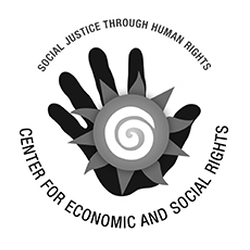By Institute for Economic Justice (IEJ)
South Africa entered a third wave of COVID-19 infections in June 2021.[1] Many people are still left reeling from the first and second waves, and their associated lockdowns, which saw thousands of people losing not only their loved ones, but also their incomes and livelihoods. As this third wave progresses economic activity is expected to contract, with likely fallout for workers, businesses, and communities. In 2020, South Africa's economy contracted by 7 percent. Despite positive growth in the first quarter of 2021, the economy remains smaller than its pre-COVID levels and continues to shed jobs as the unemployment rate reached a record high of 32.6 percent—43.2 percent under the expanded definition--and continued to increase in the second quarter to 34.4 percent and 44.4 percent respectively - the highest since the inception of the Quarterly Labour Force Survey (QLFS).[2] Investment, measured by “Gross Fixed Capital Formation”, which seemed to increase in the last two quarters of 2020 (Q3 and Q4) - albeit still below its previous levels - is declining yet again in Q1 2021.
Despite the loosening of restrictions in 2021, South Africans are still living under immense hardship as lockdowns form only one part of the broader negative economic impact of the pandemic.[3] According to ongoing tracking of national income and the coronavirus (NIDS-CRAM Wave 4) data, 39 percent of households ran out of money to buy food in January 2021 and 17 percent of households experienced weekly household hunger.[4] Without adequate and speedy support, there is a significant risk that people, especially children, will suffer severe long-term consequences.
The Institute for Economic Justice (IEJ) has previously warned that there can be no recovery without rescue. In April 2020, President Cyril Ramaphosa announced South Africa’s R500 billion (US$ 1.05 billion) rescue package aimed at supporting workers, businesses and households through the pandemic.[5] This programme saw numerous problems in implementation, but as of February 2021 only one-third of that R500 billion had materialized.[6] This has meant that many did not receive much-needed relief, including workers, small businesses, the informal sector and women who have been disproportionately affected by lockdown measures to curb the spread of the pandemic.
While the need for policies to spur economic recovery is undisputed, the IEJ re-emphasizes the need for ongoing and expanded rescue measures during these times of crisis, especially in light of the pandemic’s third wave. International evidence has shown that governments have renewed and expanded their rescue packages to support workers and businesses as the crisis continues. For instance, the Australian government announced a new package for the tourism sector valued at US$ 928 million in addition to the measures it had extended to the sector in January 2020.[7] On the other hand, Germany extended its “short-time work” furlough programme, which compensates workers for lost earnings caused by temporarily being put on reduced working hours, until December 2021.[8] Evidence collected in the last year has provided us with a clearer picture of how vulnerabilities have been distributed. We now know more about how different sectors, demographics, and geographies have suffered (or even in some cases benefitted). This allows for a more targeted, equitable and efficiently distributed allocation of resources, to ensure that those most vulnerable are those receiving the most support.
Vulnerabilities in the third wave
In a recent Policy Brief[9] that surveyed the vulnerabilities of the South African economy in the first quarter of 2021, the IEJ found:
- Employment in construction, manufacturing, wholesale and retail and private households was particularly hard hit.
- Within manufacturing, sub-sectors linked to construction activities; textiles, particularly footwear; and chemicals and plastics continue to struggle.
- Tourism and hospitality linked services, most within wholesale and retail, and transportation, struggled to recover from lockdown restrictions.
- Already vulnerable workers, seen through lack of Unemployment Insurance Fund (UIF) registration or contracts, were much more likely to lose their jobs.
- Informal economy workers and businesses suffered disproportionately.
- Small-scale farmers continue to struggle to re-establish levels of production and sales.
- Women were harder hit and have battled to regain employment and income, while suffering increased hunger and gender-based violence.
- Unpaid care work has increased for women, particularly due to closure of schools, school feeding schemes, and early childhood development centres.
- Hunger has risen greatly, including for children.
We now know that Level 3 restrictions will further contract economic activity, with particularly dire consequences for the tourism and hospitality sectors and informal sector workers. The vulnerabilities highlighted here clearly show that a substantive rescue package, which prioritizes the most vulnerable, is required.[10]
Summary of recommendations
The pandemic has been catastrophic across the South African economy, albeit with heterogeneous impacts on different sectors and communities. The vulnerabilities outlined in this brief reinforce the need for ongoing and expanded rescue during these times of crisis, especially in light of the pandemic’s third wave. Internationally, COVID-19 responses by governments have been renewed, expanded, and targeted as the pandemic has persisted.[11] In line with international responses, South Africa needs more targeted policies to help households, workers, and businesses to address existing vulnerabilities. The following policy recommendations should be considered.
- Support businesses to stay open in the short term despite the loss of business activity by: replacing the Loan Guarantee Scheme with grant and heavily subsidised credit; a six-month moratorium on bankruptcy claims; and a six-month sector-targeted tax deferral programme.
- Maintain employment through wage support and employment regulation by: extending and improving Temporary Employers/Employee Relief Scheme (TERS) benefits; more equally sharing the loss of income amongst workers; and allowing for greater short-time work.
- Extend sector-specific support plans to resuscitate sectors that have been particularly hard hit by the pandemic by: leveraging development finance institutions (DFIs) for special subsidized development financing; extending further relief funds to smallholder farmers and the tourism and hospitality sector; increasing public investment in the manufacturing sector and green initiatives; and increasing relief to Early Childhood Development (ECD) centres.
- Protect workers’ health by democratizing workplaces through: identifying workers with health risks and prioritizing their safety; recognizing COVID-19 as an occupational disease enabling greater social protections and entitlements; ensuring implementation of COVID-19 protocols through joint monitoring by workers/union and employers; allowing workers’ to refuse to work if health and safety standards are not being respected; and ensuring workers requiring COVID-19 testing access those publicly or privately.
- Boost construction-sector employment and public infrastructure through: increasing levels of public infrastructure spend targeted at bolstering essential services and supporting hard-hit economic sectors; increasing funding to the Presidential Employment Stimulus (PES); and mobilizing DFI resources to raise public and private investment.
- Increase support for the informal sector through: extending direct cash transfers targeting women and informal workers, especially where the Unemployment Insurance Fund/ Temporary Employers/Employee Relief Sch (UIF/TERS) is unable to reach; reforming current business grant criteria to allow greater access; improving coordination and communication between informal workers, local municipalities, and CSOs; and intensifying efforts to improve access for informal sector workers to TERS.
- Offer more significant support to workers who have lost employment by: allowing informal or self-employed workers to register for UIF; developing new vocational skills training programmes to upskill those most at risk of dismissal and those who are temporarily unemployed; utilizing the PES to employ workers who have lost their jobs in activities connected with that sector; increasing funding to the Commission for Conciliation, Mediation and Arbitration (CCMA); and incentivizing businesses to bring back furloughed or retrenched workers.
- Improve care support infrastructure by: ensuring that in the event of another hard lockdown or lockdown regulations that lead to school closures, government and businesses should provide childcare services for individuals that can continue to work.
- Sustain livelihoods through urgently extending and improving social relief measures by: reinstating the Social Relief of Distress (SRD) grant at, at least, R585 per month and expanding the grant to include all care-givers until a Universal Basic Income Guarantee is implemented and providing food vouchers targeted at households that are not recipients of other support.
- Improve support for women, children, and frontline workers through: the full reimplementation of the school feeding programme; targeted programmes and facilities, including those run by CSOs, to confront gender-based violence and femicide (GBV-F); increased speed and scope of the vaccine roll out for essential workers, including informal workers; and increased psychosocial support to frontline workers.
[1] National Institute for Communicable Diseases, Latest Confirmed Cases of Covid-19 in South Africa, 10 June 2021, https://www.nicd.ac.za/latest-confirmed-cases-of-covid-19-in-south-africa-10-june-2021/
[2] Stats SA, Quarterly Labour Force Survey, Quarter 2: 2021, http://www.statssa.gov.za/publications/P0211/P02112ndQuarter2021.pdf;
http://www.statssa.gov.za/publications/P0211/Media%20release%20QLFS%20Q1%202021.pdf
[3] Bhorat Kohler and Stanwiz Hill, COVID-19 and the Labour Market: Estimating employment effects of South Africa’s national lockdown. DRPU Working Paper 202107, 2021, http://www.dpru.uct.ac.za/sites/default/files/image_tool/images/36/Publications/Working_Papers/DPRU%20WP202107.pdf
[4] National Income Dynamics Study-Coronavirus Rapid Mobile Survey (NIDS-CRAM) Wave 4, Synthesis Report, 2021, https://cramsurvey.org/wp-content/uploads/2021/05/1.-Spaull-N.-Daniels-R.-C-et-al.-2021-NIDS-CRAM-Wave-4-Synthesis-Report..pdf
[5] IEJ, South Africa’s COVID-19 Rescue Package Scorecard. COVID-19 Factsheet #2, 2020, https://www.iej.org.za/wp-content/uploads/2020/08/IEJ-COVID-19-fact-sheet-2-%E2%80%93-rescue-scorecard-1.pdf
[6] B. Sibeko, J. Taylor and K. Lehmann-Grube, Covid-19 package: Relief and rescue are the foundations of economic recovery, 2021, https://www.dailymaverick.co.za/article/2021-02-10-covid-19-package-relief-and-rescue-are-the-foundations-of-economic-recovery/
[7] Colin Packham and Jamie Freed, Australia unveils $928 million COVID-19 stimulus package for the tourism industry, Reuters, 2021, https://www.reuters.com/article/us-health-coronavirus-australia/australia-unveils-928-million-covid-19-stimulus-package-for-tourism-industry-idUSKBN2B301G
[8] Germany Trade & Investment Guide, Germany Extends Successful Coronavirus Short-Time Work Scheme, https://www.gtai.de/gtai-en/invest/investment-guide/short-time-work-scheme-550172
[9] IEJ, Vulnerabilities and Policy Priorities for South Africa’s COVID-19 Third Wave, 2021, https://www.iej.org.za/vulnerabilities-and-policy-priorities-for-south-africas-covid-19-third-wave/
[10] The National Treasury introduced a relief package in July 2021, which, however is substantively less than what the IEJ estimated is needed to address the crisis. See: https://www.youtube.com/watch?v=qlbZcd7qhPo.
[11] The brief mainly draws on International Responses to COVID-19 from the ILO COVID-19 Country Policy Tracker, the World Bank Tracker of Industry Support Measures and the IMF Policy Tracker. Any reference to country-specific international examples uses one of these trackers, unless otherwise stated.








